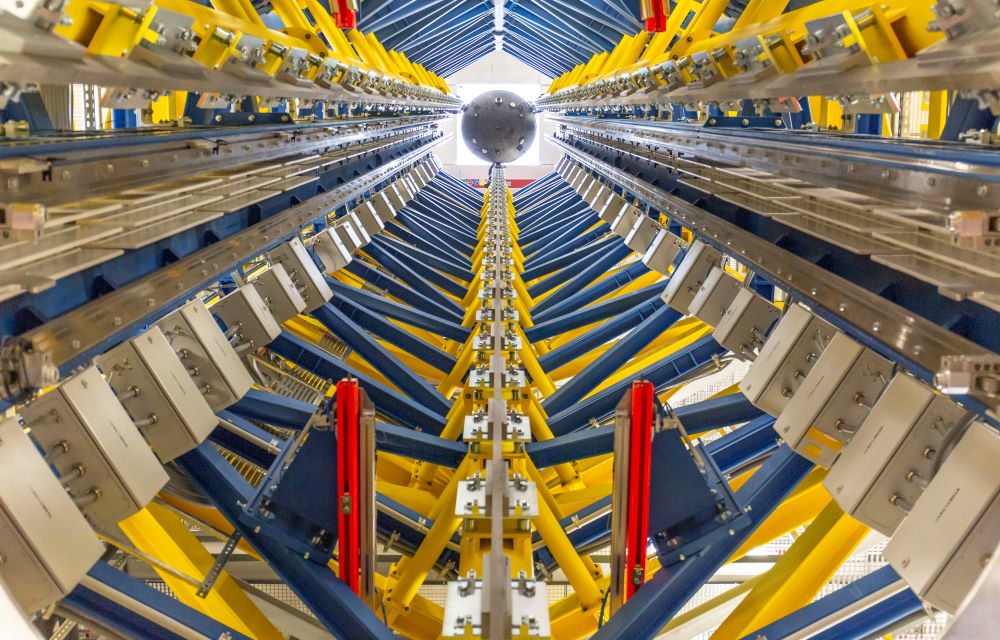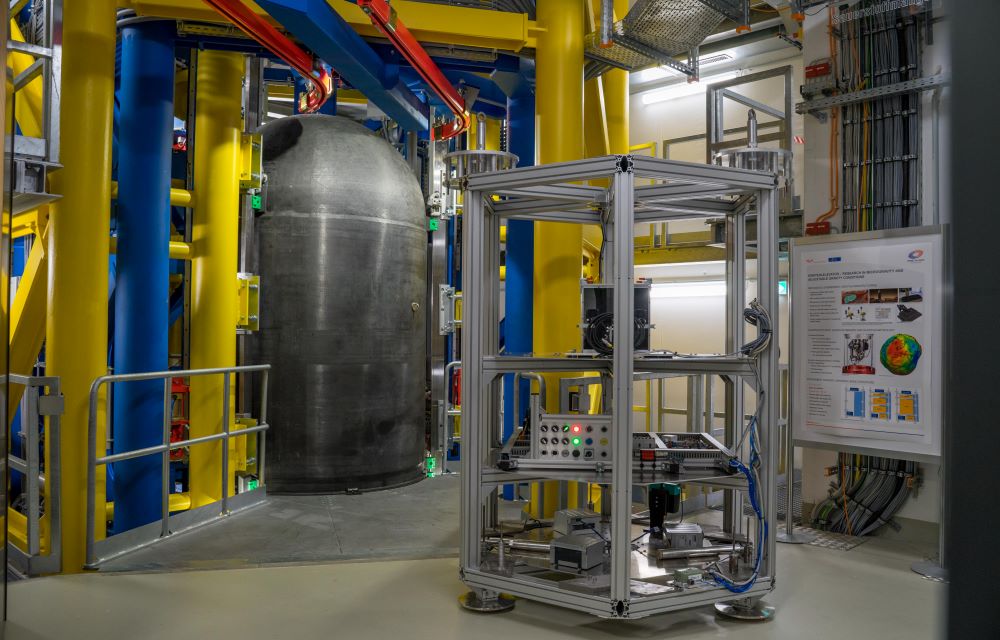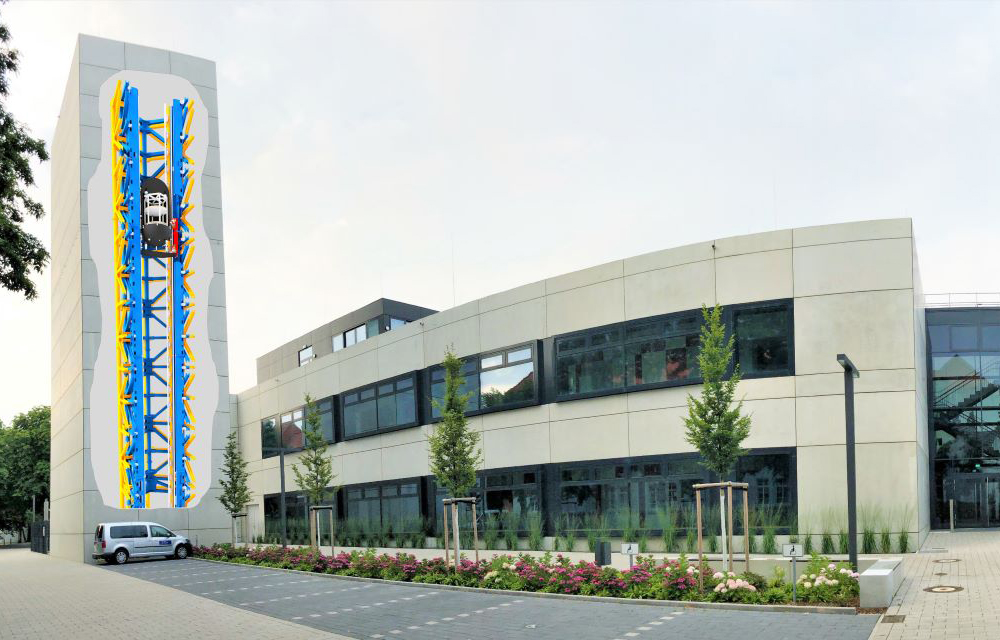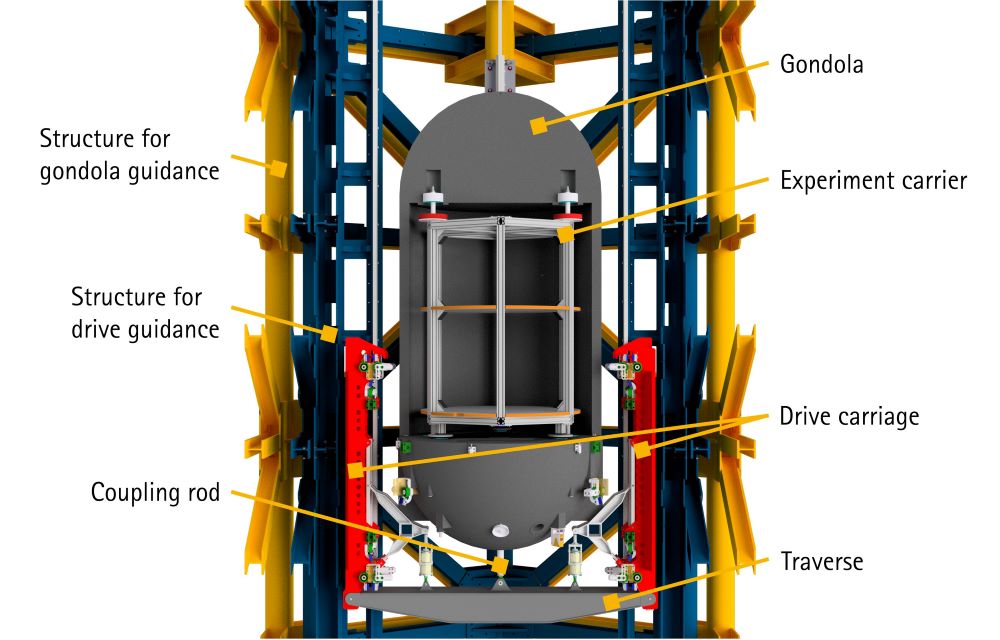The Einstein-Elevator is a worldwide unique, 40-meter-high drop tower of the next generation, which makes it possible to conduct experiments under weightlessness/microgravity and partial gravity. The theoretical basis and naming is based on Albert Einstein’s thought experiment on the equivalence principle.
The DFG-funded large-scale research facility was built at the Hannover Institute of Technology (HITec) as part of the then Cluster of Excellence “Centre for Quantum Engineering and Space-Time-Research” (QUEST) under the coordination of the Institute of Transport and Automation Technology (ITA).
Technical data and experimental procedure
The drop tower consists of an inner and an outer support structure as well as a linear driven gondola, which acts as a vacuum chamber. In order to perform experiments, they are placed on an experiment carrier, which is then inserted into the gondola. The linear drive enables the acceleration of the gondola and catapults the experiment into the “air”, which is then in weightlessness/microgravity for 4 seconds. With a repetition rate of up to 300 experiments per day (one flight every 4 min), the Einstein-Elevator ensures that research campaigns can be carried out in a very short time or that static investigations can be realized. The maximum payload of the experiments including the experiment carrier is 1,000 kg.
Research operation
The Einstein-Elevator launched its first flight in 2019, with research operations beginning in spring 2020. In addition to basic physics research in the field of earth measurement and inertial sensor technology, there are other research areas that are being investigated with the help of the Einstein-Elevator. These include additive manufacturing from mechanical engineering and production technologies for future space missions in general. In addition, external scientists also have the opportunity to conduct their experiments within the Einstein-Elevator.



